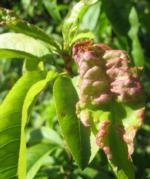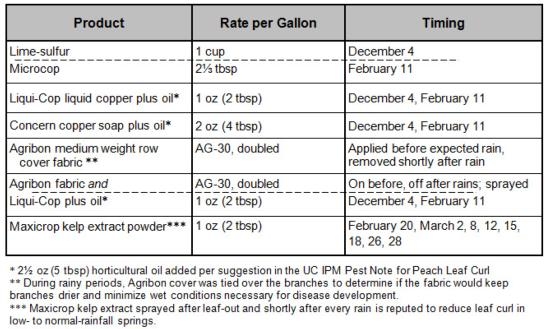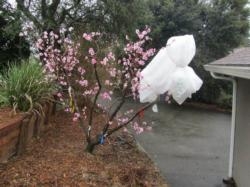
The treatments that Chuck used included: Lime sulfur, Liquicop, Concern Copper Soap Plus Oil, Agribon medium weight row cover fabric, Agribon plus Liquicop, Kelp Extract
The results: Compared to untreated branches, those treated with Liqui-Cop averaged about 70% control, copper soap 80% control, and Agribon by itself just under 60% control, but these treatments were not statistically different. Agribon generally kept the branches dry, although some moisture was evident after heavy rains. Two treatments provided nearly
Conclusion:
The two liquid copper products have fairly similar efficacy—they improved control and perhaps sufficiently, but still not great. The control achieved, although resulting in some unsightly damage, is probably enough to allow the tree to produce good shoot growth with enough healthy leaves to nourish the rapidly growing young fruit. Agribon likely allowed some rain to penetrate to the branches. It may be best held up with a post in the middle to allow rain to run off down the sloped sides rather than having a flat surface on top, but it must be fastened securely because of strong winds. Agribon plus Liqui-Cop worked quite well, probably because the fairly good control with Liqui-Cop was enhanced by drier conditions. The combination of lime sulfur (in late fall) followed by Microcop (in late winter) was highly effective, as expected. Normally only one of these products was used for both fall and winter applications, but insufficient product was available for both. Maxicrop (kelp), even sprayed eight times, provided no control at all.
For more details on Chuck Ingels Peach Leaf Curl Trials, go to the Sacramento County Website at: http://cesacramento.ucdavis.edu/Pomology/____Tree_Fruit_Crops/2012_Peach_Leaf_Curl_Trial_at_the_Fair_Oaks_Horticulture_Center/